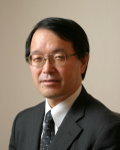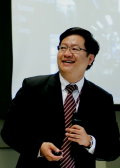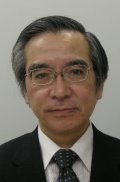








 As June is the peak tourist season of Penghu and also the graduation season of NPU, the availablity of flight tickets from Taipei SonShan to Penghu Magong is pretty limited. Please make your flight reservation at your earliest convenience. Thank you.
As June is the peak tourist season of Penghu and also the graduation season of NPU, the availablity of flight tickets from Taipei SonShan to Penghu Magong is pretty limited. Please make your flight reservation at your earliest convenience. Thank you.
 "INSS 2011 Reception Party - Transportation Service" (June 12, 2011)
"INSS 2011 Reception Party - Transportation Service" (June 12, 2011)
From Magong Downtown (Hai Yue Hotel and Ya Ling Hotel) to National Penghu University of Science and Technology (NPU).
People who want to join the party please meet at the lobby of Hai Yue Hotel and Ya Ling Hotel at 16:40.
 "Semi-submarine and the Sea Pasture" (June 13, 2011)
"Semi-submarine and the Sea Pasture" (June 13, 2011)
People who want to join the fishing trip please meet at the front of Library Building at 17:10. Bus will leave at 17:20.
 "Conference Tour (Lab Tour)" (June 14, 2011)
"Conference Tour (Lab Tour)" (June 14, 2011)
People who want to join the tour please meet at the front of Library Building at 17:00.
 "Conference Dinner - Pescadores Resort" (June 14, 2011)
"Conference Dinner - Pescadores Resort" (June 14, 2011)
People who want to join the banquet please meet at the front of Library Building at 18:20. Bus will leave at 18:30.
Early bird deadline: May 25, 2011 (EXTENDED)

INSS 2011 will be held from June 12-15, 2011 in Penghu, Taiwan.

INSS 2011 is the eighth annual conference in the series, and features a highly selective technical program. We invite outstanding research papers for the regular paper track from the field of sensor technology, wireless networking, or application of networked sensor systems. The conference especially encourages submissions that investigate research issues shared between all three areas.
Ranked as one of the world's best secret islands by Lonely Planet, Penghu, site of the INSS 2011, its beauty and fascination can be found at http://www.lonelyplanet.com/yemen/travel-tips-and-articles/76176.

| Paper submission deadline for Industry Track is extended! | |
| Paper Submission Deadline: | February 28th,2011 (Monday) (EXTENDED) |
| Notification of Acceptance: | March 25th,2011 (Friday) |
| Camera-Ready Papers: | April 22th,2011 (Friday) |
| Conference Dates: | June 12-15,2011 |


Masatoshi Ishikawa (The University of Tokyo)
" Real Fusion between Sensing and Network Technology?
- What are the Problems? "
Processing architectures required in sensing are designed to transform real-world information into useful information, and there are various restrictions depending on real world physics. On the other hand, network technologies are mainly designed for data exchange in the information world, as is seen in packet communications, and do not go well with sensing architectures from the viewpoints of real-time properties, spatial continuity, etc. This indicates the need for understanding the architectures and restrictions of sensor technologies and network technologies when aiming to fuse these technologies. This talk clarifies the differences between these processing architectures, proposes some issues to be addressed in order to achieve real fusion of them, and presents future directions toward real fusion of sensor technologies and network technologies.

Sajal K. Das (The University of Texas at Arlington, USA)
Program Director, National Science Foundation
Director, Center for Research in Wireless Mobility and Networking (CReWMaN)
Cyber-Physical and Networked Sensor Systems: Challenges and Opportunities
Rapid advancements in embedded systems, sensors and wireless communication technologies have led to the development of cyber-physical systems, pervasive computing and smart environments with important applications such as smart grids, health care and security. Wireless sensor networks play significant role in building such systems as they can effectively act as the human-physical interface with the digital world through sensing, communication, computing and control or actuation. However, the inherent characteristics of wireless sensor networks, typified by resource constraints, high degree of uncertainty, heterogeneity and distributed control pose significant challenges. This talk presents a novel framework for multi-modal context recognition from low-level sensor streaming data, context-aware data fusion, and situation-aware decision making with improved information accuracy, security and context inference quality. The underlying approach is based on randomized algorithms, dynamic Bayesian model, information theoretic reasoning, and energy-accuracy trade-off analysis. The talk is concluded with open issues and future directions of research.

Ted Chang, Ph.D. (CTO, Quanta Computer Inc.)
From Cloud Computing to Cloud Sensing
Dr. Ted Chang is Chief Technology Officer of Quanta Computer Inc. He oversees the corporate technology strategy, advanced product development and global partnership. Along his role as CTO, he is also assigned as the head of Quanta Research Institute (QRI) for advanced researches, innovations and new business incubations. Over the past ten years, Dr. Chang and QRI team has received various recognitions globally, which includes the best technology management award from CSMOT in 2006, a regional winner award from European Satellite Navigation Competition in 2008 and the top innovation enterprise award from MOEA in both 2003 and 2010 etc. Dr. Chang´s past projects on One Laptop Per Child (OLPC) and QRI research model were published as business cases by Harvard Business School. Dr. Chang´s research now focuses on innovation management, user experience design and service engineering over cloud computing.


Michito Imae
Time and frequency remote calibration system using GPS common-view method
National Metrology Institute of Japan (NMIJ) of AIST has been studying a research and development on the time and frequency remote calibration system which used the GPS common-view method. This system has been designed to realize the calibration without carrying the device under calibration (DUC) to a calibration laboratory located at remote site. It has the following characteristics and facilities: i) It uses the GPS common view method using GPS L1 C/A code, ii) The measured data at remote site for the DUC is transmitted via internet, iii) The internal oscillator of the DUC can be synchronized to the national time and frequency standard using the Web site GPS data of NMIJ. We are developing a smaller terminal unit using a high sensitive GPS receiving module and wireless data transmission methods between the terminal unit and the data server to realize the "on-site, on-machine, real time" calibration system. According to the specifications described above, this system is widely applicable for the other fields, such as a time and frequency reference source for the sensor network.


